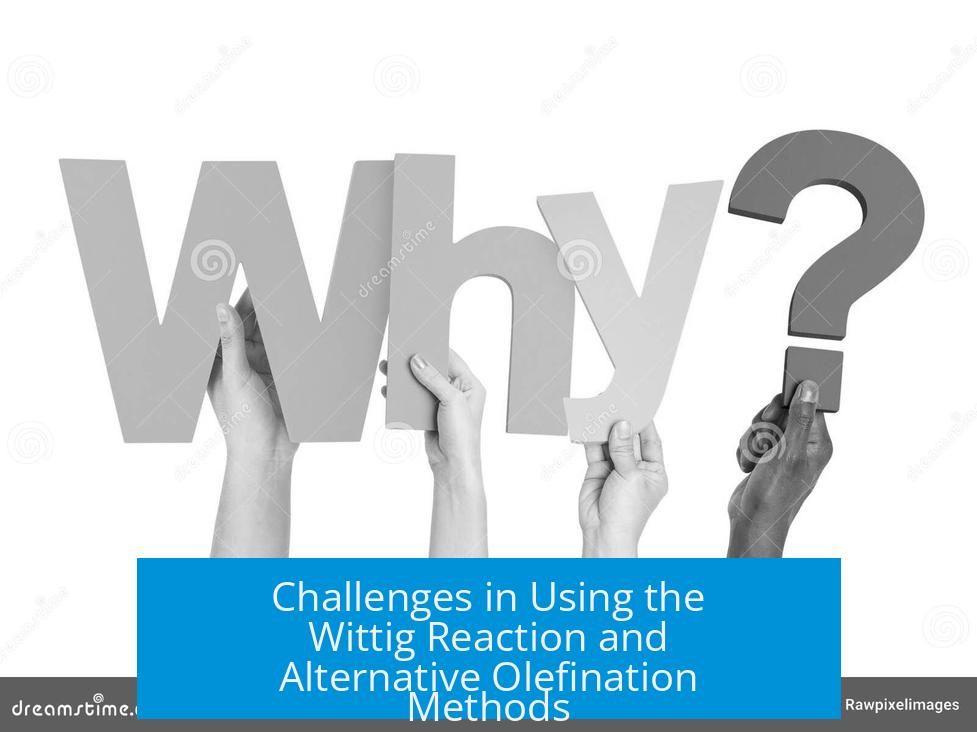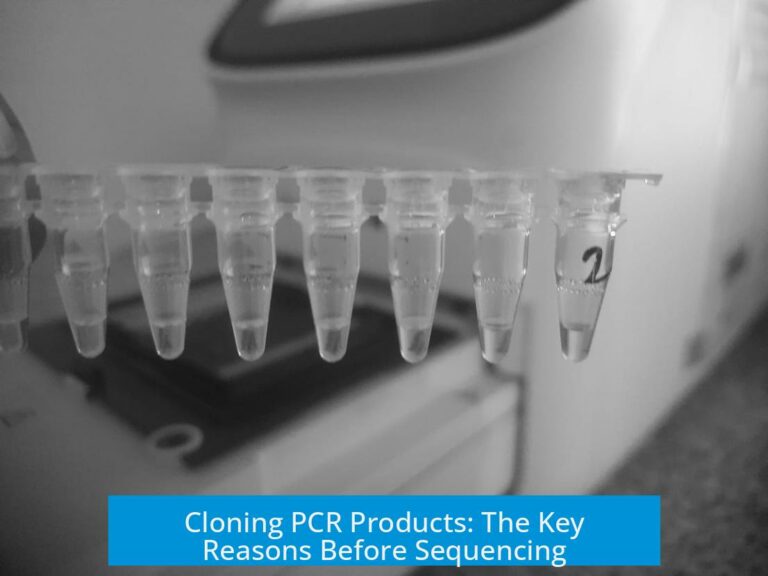Why Can’t I Just Use a Wittig Reaction Here?

The Wittig reaction is a powerful tool in organic synthesis, but it is not always the best choice in every situation. Practical, chemical, and educational factors limit its universal application. Key challenges include difficult purification, low atom economy, isomer formation, and scale limitations. Alternative methods often provide simpler, cleaner, and more efficient outcomes.
Practical Challenges of the Wittig Reaction
Purification Difficulties
One major obstacle in using the Wittig reaction is removing its byproduct, triphenylphosphine oxide (Ph3PO). Ph3PO is notoriously hard to eliminate completely from the product mixture. Even chromatographic methods struggle to reduce its concentration to less than about 1% by mass or mole percent.
In practice, purification may involve precipitation or filtration over silica gel to remove bulk Ph3PO. However, complete removal remains difficult and time-consuming. This complication increases downstream workload and can degrade overall yield or purity.
Atom Economy Concerns
The Wittig reaction generates Ph3PO as stoichiometric waste. This reduces atom economy, meaning not all atoms from the reactants end up in the desired product. Large quantities of Ph3PO waste raise environmental and cost issues, especially in industrial or large-scale applications.
Scale and Time Constraints
On small scales (millimole or less), purification challenges may be manageable. But in larger scale operations or time-sensitive settings, Ph3PO removal becomes a bottleneck. The process may take multiple days and require extensive effort, which contradicts efficiency goals.
Alternatives Offering Easier and Cleaner Olefination
Grignard Reagents and Acid Workup
One alternative involves using Grignard reagents like methylmagnesium bromide (MeMgBr) followed by an acid-mediated elimination. This sequence typically gives the olefin directly. The process is simple, scalable, and avoids complicated purification steps. A basic phase separation often suffices to isolate the product.
This approach contrasts with the Wittig reaction by producing less difficult waste and enabling faster workups.
Tebbe Reagent as a One-Step Option
The Tebbe reagent offers a one-step conversion of carbonyls to olefins. Its advantages include fewer purification challenges and improved handling safety compared to older methods.
Modern Tebbe-type reagents are user-friendly in many laboratory settings. They offer efficient olefination without generating Ph3PO waste, thus improving the reaction’s atom economy and overall practicality.
Regiochemical and Isomer Considerations
Wittig Reaction and Olefin Isomer Mixtures
The Wittig reaction often produces mixtures of alkene isomers. This arises because the alkene product can exist in multiple geometric forms (E/Z) or positional variants depending on the substrate.
Such mixtures complicate purification and reduce selectivity. Choosing the Wittig reaction may require additional steps to separate isomers or limit the reaction scope to substrates that yield fewer isomers.
Alternative Methods Limiting Isomers
In some cases, alternative methods are preferred because they restrict isomer formation. For example, Grignard addition followed by acid treatment can yield olefins free of isomeric side-products, simplifying purification and improving yields.
When no olefinic isomers are possible, the purification and selectivity challenges diminish, making alternatives more attractive.
Educational and Pedagogical Factors
Instructional Context
In organic chemistry courses, the choice of reactions depends on curricular goals. For early courses (Orgo I or II), instructors may present the Wittig reaction to illustrate fundamental concepts of alkene synthesis or carbonyl chemistry. The guidance thus centers on learning rather than efficiency.
Some faculty emphasize Wittig to teach retrosynthesis or mechanistic reasoning, even if other methods are more practical.
Balancing Learning and Practicality
Later coursework or advanced labs might introduce faster or cleaner synthetic routes. These include using Tebbe reagent or Grignard reagents, illustrating more mature synthetic logic. This progression mirrors how professional chemists select reactions based on efficiency.
In some contexts, the Wittig reaction represents the “long way” to a product. More advanced approaches act like using calculus rather than algebra—more suited to complex challenges.
Summary and Key Takeaways
- The Wittig reaction generates triphenylphosphine oxide, a byproduct difficult to completely remove, complicating purification.
- Its atom economy is low due to stoichiometric waste, increasing costs and environmental burden, especially on scale.
- Wittig reactions often produce mixtures of alkene isomers, complicating product isolation.
- Alternatives like Grignard addition/acid workup or Tebbe reagent offer simpler, cleaner, and more scalable olefination routes.
- Educational goals sometimes prioritize Wittig for teaching reaction mechanisms rather than synthetic efficiency.
- Choosing an olefination method depends on practical constraints, desired selectivity, scale, and instructional context.
Why is purification difficult after a Wittig reaction?
The byproduct, triphenylphosphine oxide (Ph3PO), is hard to remove completely. It often requires precipitation or filtration, but reducing its amount below 1% is challenging, especially at larger scales.
Can using the Wittig reaction cause issues with alkene isomers?
Yes. Wittig often produces a mix of alkene isomers. This complicates purification and reduces selectivity, unlike some alternatives that limit side products.
Why might Tebbe reagent be preferred over Wittig in some cases?
Tebbe reagent can perform the olefination in one step. It’s easier to handle and avoids complicated workup steps, making it practical especially for larger scale reactions.
Are there simpler alternatives to Wittig for synthesizing olefins?
Yes. For example, treating the substrate with a Grignard reagent followed by an acid workup can yield olefins efficiently without complex purification, making it scalable and straightforward.
Does the teaching context affect whether Wittig is used?
Often, yes. In early courses, Wittig may be emphasized to teach certain concepts. Later stages may introduce more efficient or practical methods depending on the learning goals.





Leave a Comment